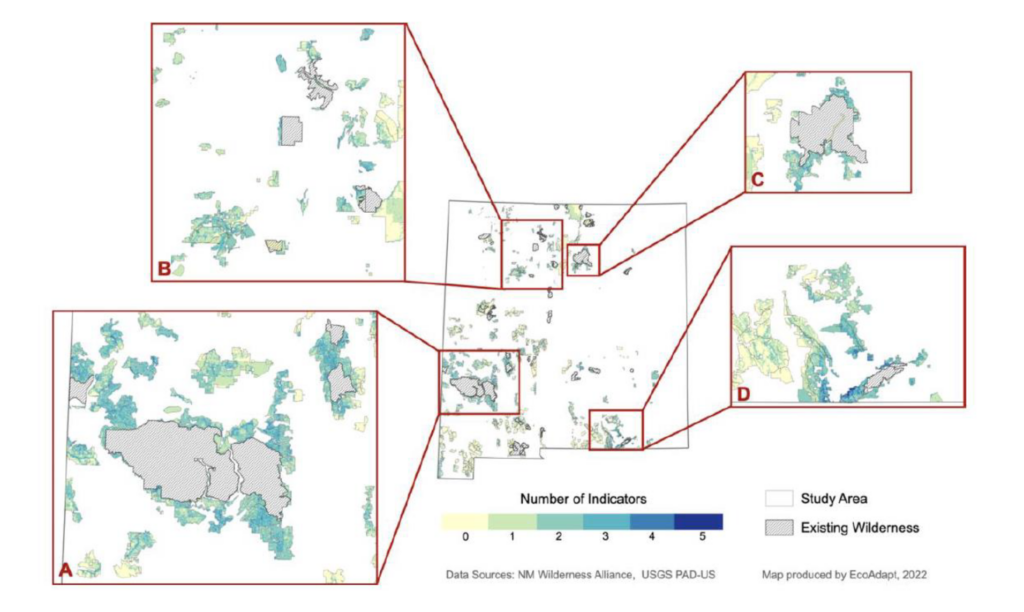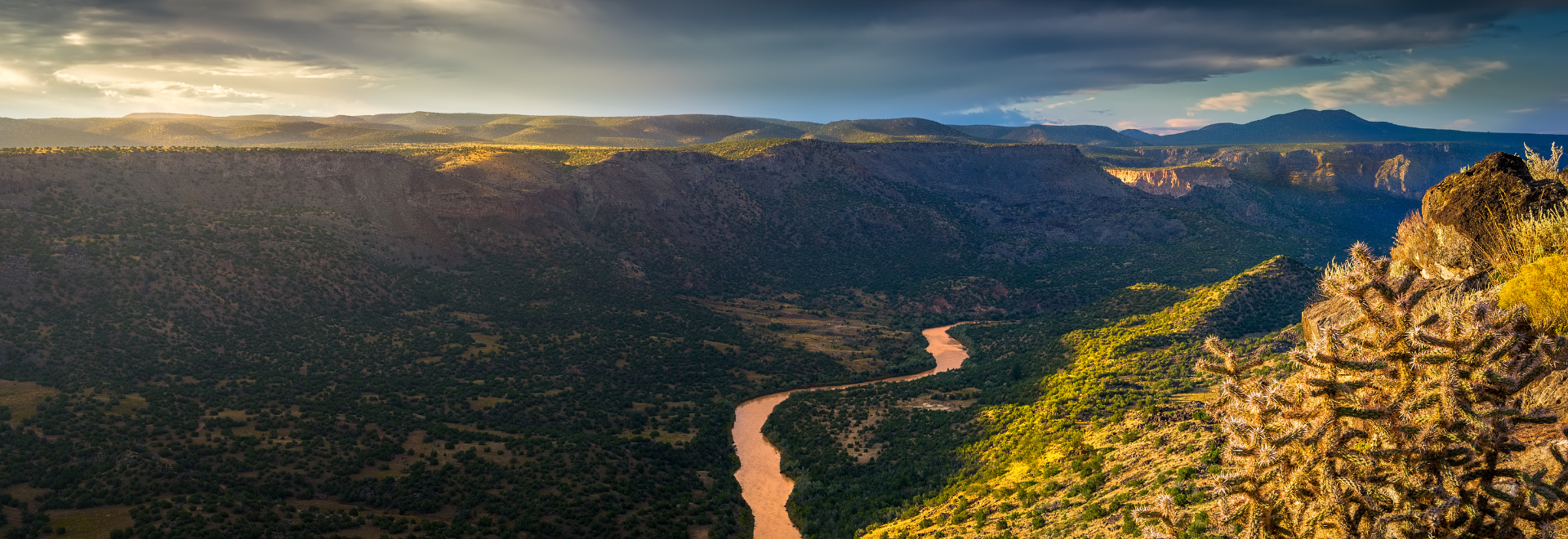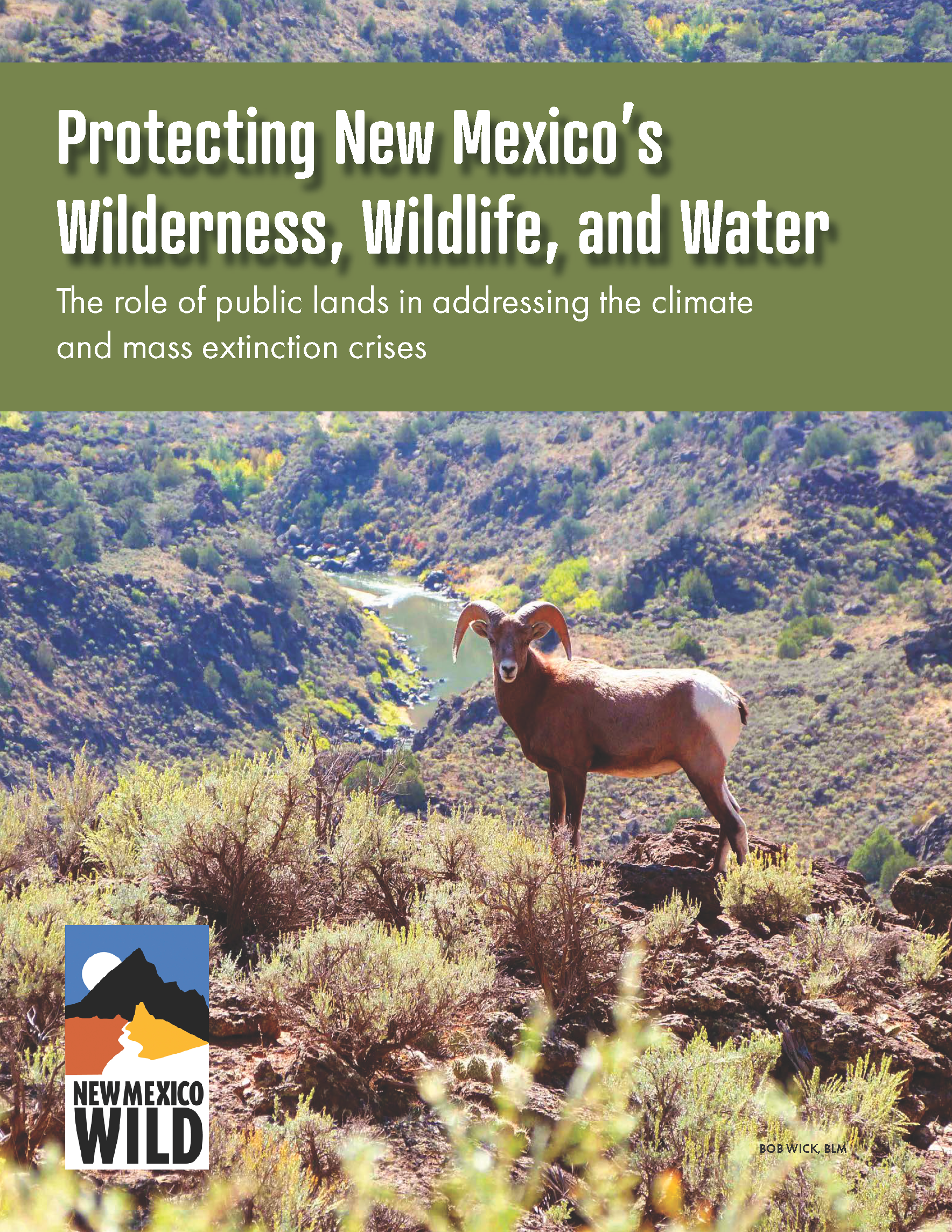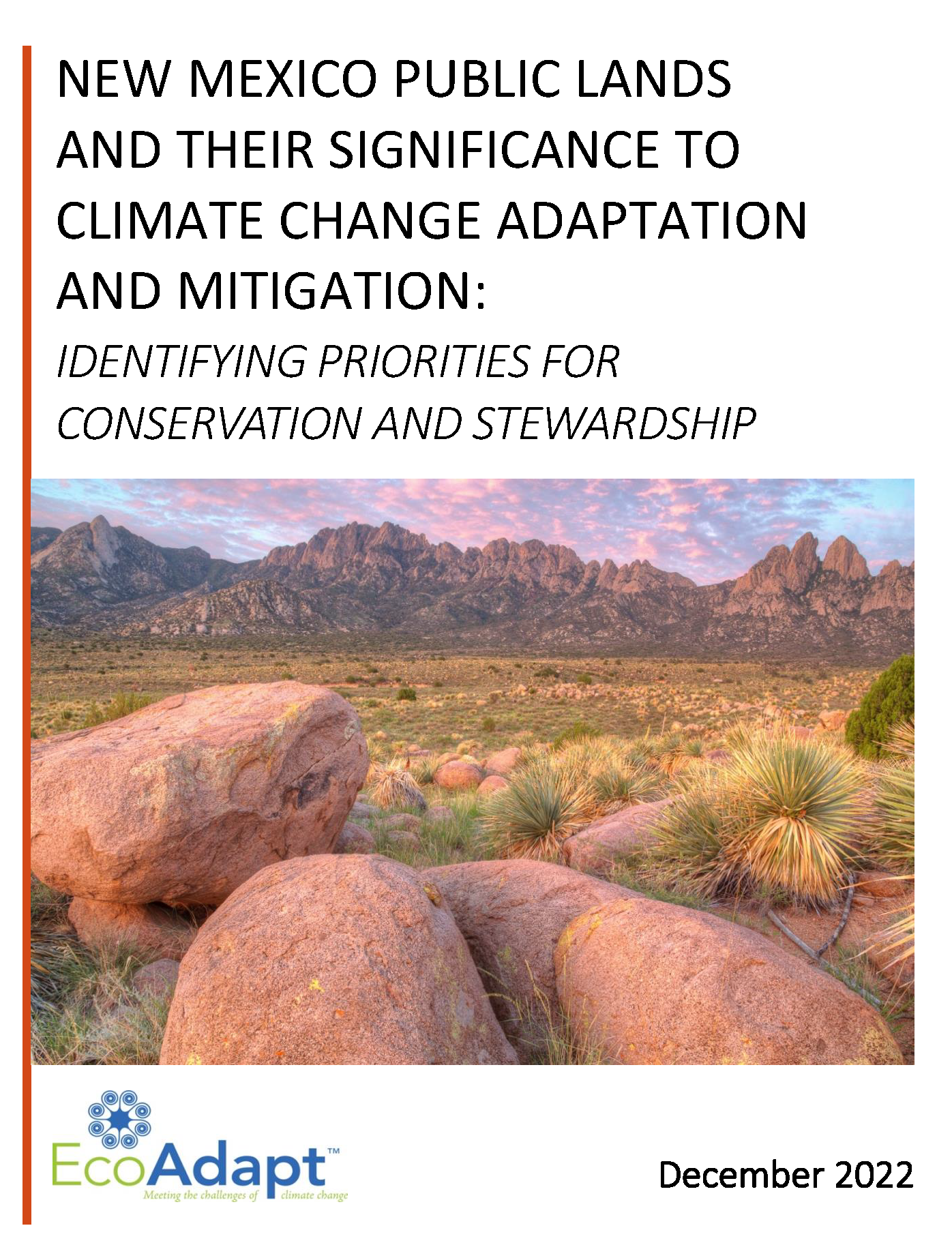A New Tool in Our Fight Against Climate Change
In 2022, with investment from our donors, New Mexico Wild commissioned a scientific study from EcoAdapt, an independent, nongovernmental organization consisting of a team of climate scientists. The study looked at climate impacts on New Mexico public lands and how to best adapt to and mitigate coming changes and was designed to help us make the best long-term decisions on where we focus our protection efforts and to provide the science behind those choices to Federal land agencies and elected officials.
Over the past 25 years, we have assembled substantial data on 5.9 million acres of New Mexico’s federal land that merits greater protection. This new study will help us focus on which of those lands are of the highest priority to adapt to and mitigate the increasing climate threats.

Detailed data and maps generated by the study will help New Mexico Wild staff, partners, and land managers determine the protection actions that will have the most positive beneficial impact on species and climate adaptation and mitigation.
Webinar Event
Upon the release of the EcoAdapt Climate Report in early 2023, we invited partner organizations, members of New Mexico Wild, and members of the general public to learn more about the study, its findings, and how these findings will inform our work in the context of the 30×30 initiative and the climate crisis in a 1-hour webinar event featuring a presentation, discussion, and Q&A.
Presenters included Tisha Broska, New Mexico Wild’s Deputy Director, Laura Hilberg, a Senior Scientist with EcoAdapt, Bjorn Fredrickson, Conservation Director with New Mexico Wild, and Mark Allison, New Mexico Wild’s Executive Director.
Watch a recording of the full webinar here.
Watch the Webinar
- Protected areas can help us adapt to climate change by maintaining landscape-scale ecological processes.
- Protected areas represent a highly effective strategy to protect existing biodiversity particularly when protections are strategically placed. Targeted protection of sites with rare species and isolated populations can reduce their vulnerability to climate change.
- Protected areas that significantly increase landscape connectivity and represent a range of environmental conditions increase species movement and reduce the risk of species loss.
- Protected areas can also play an important role in climate mitigation by preventing the degradation of ecosystems that store carbon as well as limiting the extraction of fossil fuels.




